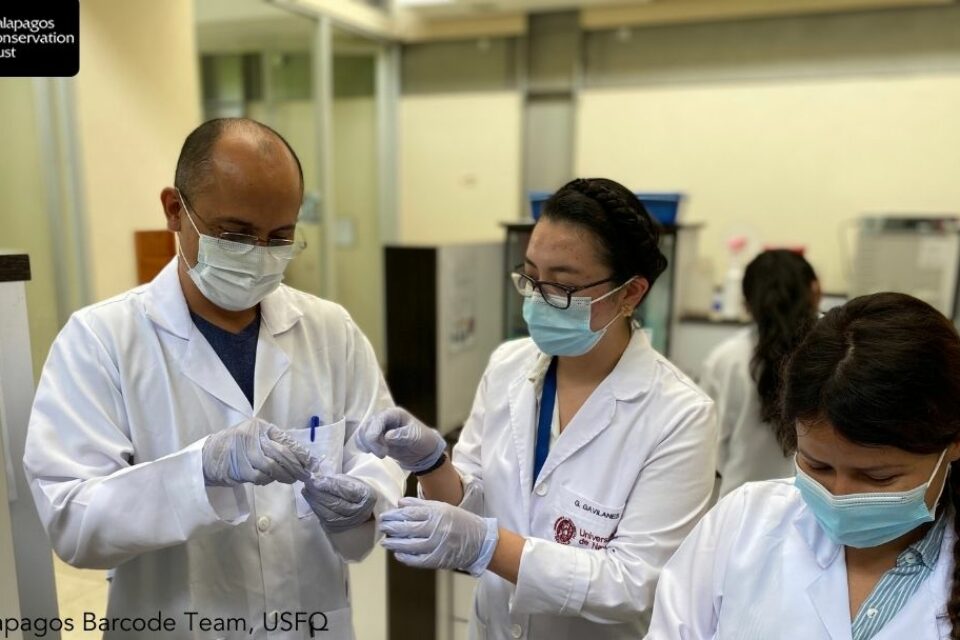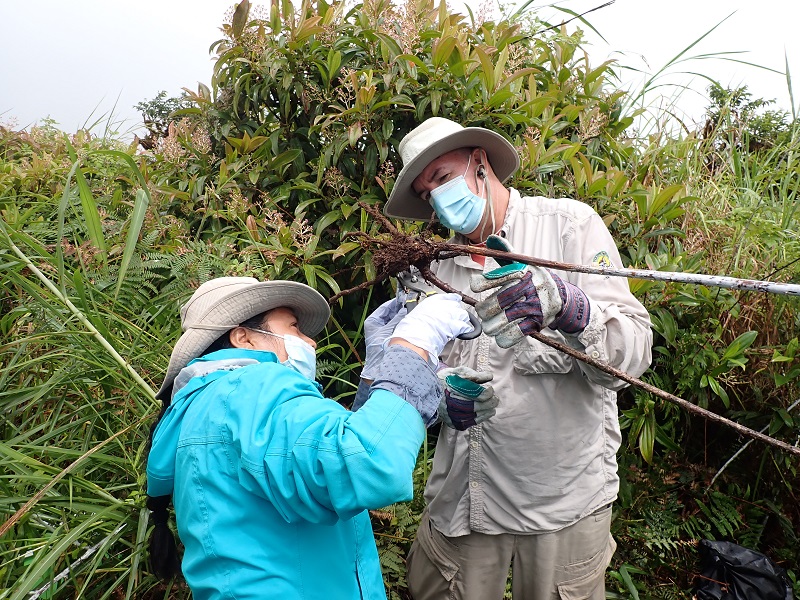

Can genetic barcoding offer more than information to the Galapagos Islands? The Barcode Galapagos Project.
The Galapagos Barcode Project came as a response to the economic emergency due to the COVID-19 pandemic, which left most of the population of the Galapagos Islands unemployed.
“It is the first successful DNA sequencing ever achieved in Isabela. We made history!” Such was the joy of Diana Pazmiño, a scientist from the Galapagos Science Center, and the laboratory team: Emma Flor, Janina Luzón, Sandra Landazuri and Kimberly Mancheno, local staff of the Barcode Galapagos Project, when they got the first DNA sequences for soil microbiome in one of the westernmost islands of the Archipelago. As if distance itself (over 1000 km away from the nearest coast of South America) was not enough, the challenge to put together a molecular laboratory in remote islands, training local people to support science, is also a remarkable achievement. Scientists in Galapagos are leaving behind the times when exporting samples to sequence DNA was the normal thing to do. With laboratories with sequencing capacity now installed and running in three islands, they are just starting to grasp onto the possibilities for science and conservation in this paradise.

The Galapagos Barcode Project came as a response to the economic emergency due to the COVID-19 pandemic, which left most of the population of the Galapagos Islands unemployed. These remote islands, popular due to their biological diversity and for inspiring Charles Darwin’s theory of evolution, rely heavily on tourism as their main source of income. However, despite its biological and economic relevance, little is known about local genetic diversity and its potential.
But every crisis has a silver lining. Through a collaborative effort with multiple institutions (The Galapagos Science Center, Universidad San Francisco de Quito, Exeter University, Galapagos Conservation Trust, and the ABG-Agency for the Regulation and Control of Biosafety and Quarantine for Galapagos), the Barcode project was able to employ 74 natural guides, fishers, farmers and other outstanding local professionals that lost their source of income for more than eight months. These locals became the eyes, hands, and feet of scientists worldwide to develop the genetic barcode of as many species as possible in three of the main islands of the Archipelago: Isabela, Santa Cruz and, San Cristobal.

The challenges of this massive endeavour included: (1) building local capacities for a variety of activities, from team leaders to field and lab assistants, and impact evaluators. Several months of remote and in-person training took place at the beginning of the project and resulted in people capable to collect, handle and process genetic samples of different kinds, from soil microbiome to environmental DNA; and (2) genetic laboratories needed to be either equipped, in the case of Santa Cruz and San Cristobal, and built on from zero on Isabela Island. A huge effort of acquisition and shipment went on for months to have new-generation sequencing technology capable of generating thousands of DNA sequences simultaneously.

During the first half of 2021, interdisciplinary teams of citizen scientists on each of the three islands left weekly for fieldwork activities. A total of 150 locations were visited and over 1000 samples were collected, including endemic plants like Scalesia and invasive species like the blackberry. This massive effort will lead to the creation of the first genetic catalogue for Galapagos and will allow researchers to respond to other ecological and evolutionary questions for different taxa, including microorganisms.
Currently, DNA is being extracted, amplified and sequenced during the laboratory phase. The data produced as part of the project will be analyzed locally, with the support of partner institutions and will contribute to local capacity building for future generations. The benefits of locally producing this information and analyzing results range from identifying new species, providing key information to combat illegal trafficking in a timely manner, controlling invasive species, etc. Likewise, it will confirm the number of existing species, strengthening scientific knowledge regarding biodiversity and the health of the ecosystems of the Archipelago.

Genetic barcode knowledge, local capacities, and in-situ laboratories are three components that can boost the conservation efforts to effectively preserve one of the most unique places for biodiversity known to mankind.
Written by Carolina Proaño, who is leading project management and communications for the Barcode Project, Galapagos Science Center, and Diana Pazmiño, Professor at the Universidad San Francisco de Quito and scientist at the Galapagos Science Center.
This article features in the Spring/Summer 2022 edition of Galapagos Matters and has been edited slightly for this blog.
What can you do to help?
The Galapagos Barcode Project is aiming to have an impact in two major areas – one to provide alternative livelihoods for Galapagos community members to support conservation science and two, to describe the genetic profile of all species found in the Archipelago. Help us support important projects like this by joining up as a GCT member or donating to our work.
Related articles


